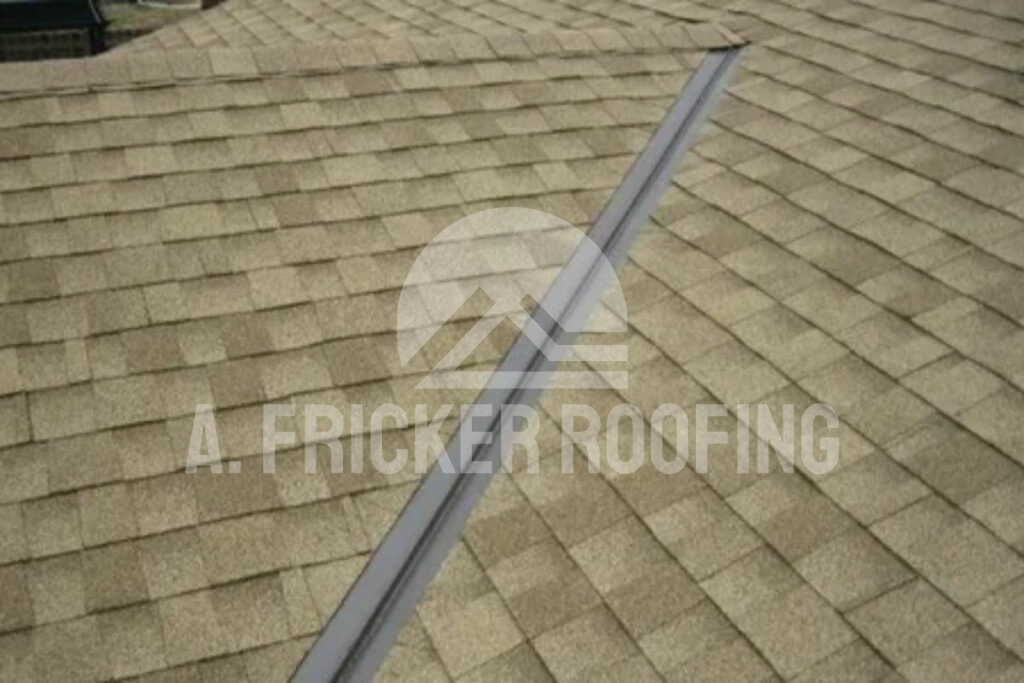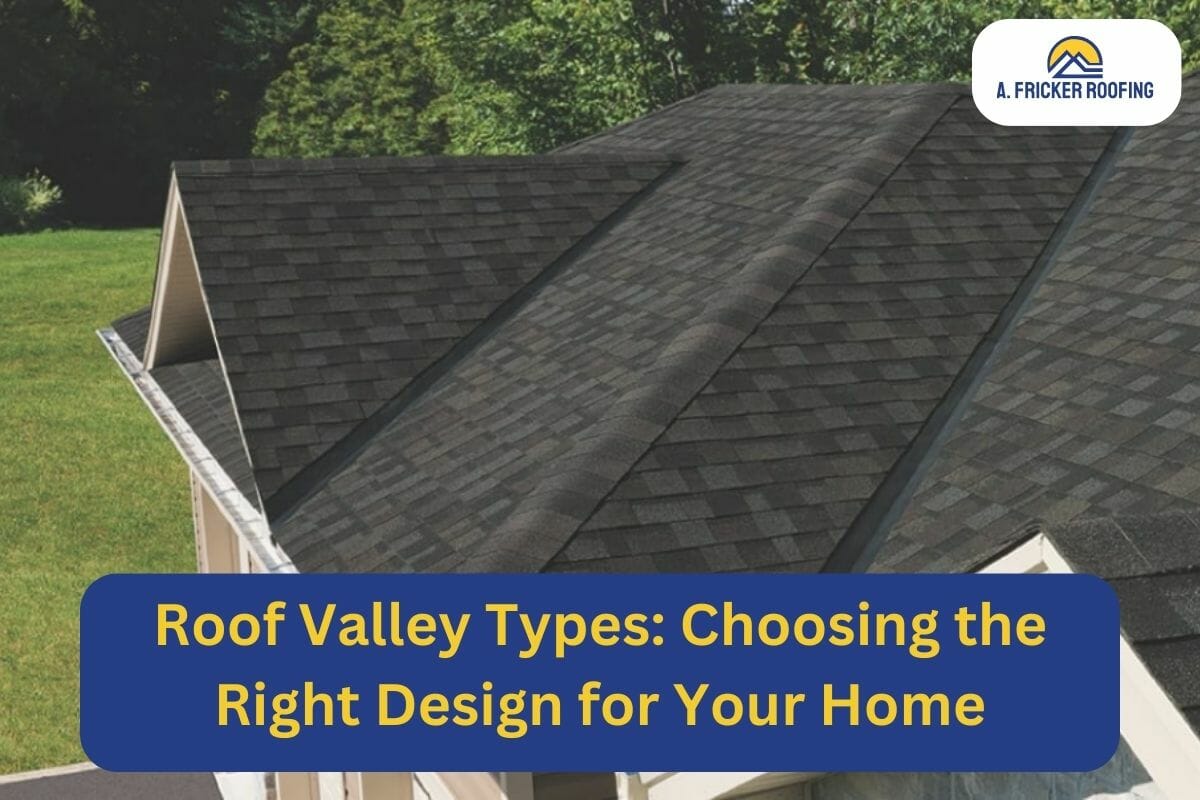As a homeowner in Tulsa, OK, how do you know what type of roof valley is best for your property? With many designs and styles available, finding your perfect match can be difficult. That’s why we’ve put together this guide to the types of roof valleys, so you can make an informed decision. Before choosing a type of roof valley, consider factors like the architecture of your home, the climate, and your budget. In this blog post, we will go over popular types of roof valleys and give you tips for selecting the best option.
But before getting into the details, let’s start with the basics.
What Are Roof Valleys?
First things first: what are roof valleys? Roof valleys are the V-shaped channels where two sloping roof faces meet. They direct water down the roof and into the gutters. As they effectively drain water and debris off the roof, they significantly contribute to your roof’s health, durability, and longevity. In the winter, roof valleys channel snow towards gutters, keeping your roof and the home’s interior safe and protected from water intrusion. But their importance doesn’t stop there, roof valleys also add an aesthetic element to your home’s design.
Why Are Roof Valleys Important?
Roof valleys aren’t just there for looks, they serve critical purposes that directly impact your home’s overall well-being. Here’s why they’re so important:
1. Preventing Water Damage
Rainwater and melted snow need a path to leave your roof, and roof valleys provide just that. Without them, water could pool on your roof, seep through the roofing material, and cause expensive damage to your home’s structure, insulation, and interior.
2. Enhancing Aesthetics
Roof valleys aren’t all about function, they also add visual interest to your home’s exterior. The choice of valley type can influence your home’s architectural style and curb appeal. A well-designed valley can make your roof look pristine and polished.
3. Extending Roof Lifespan
Properly installed and maintained roof valleys can prolong your roof’s lifespan. By directing water away from vulnerable areas, they reduce the risk of premature material deterioration and roof leaks.
4. Preventing Ice Dams
In colder climates, ice dams can form when warm air from your home melts snow on the roof, which then refreezes at the eaves. Roof valleys, especially those with metal flashing, help prevent ice dams by allowing melted snow to flow off the roof before it has a chance to refreeze.
Also Read: Problems With Your Roof Valley? Here Is What You Can Do About It
Types of Roof Valleys
Roof valleys aren’t a one-size-fits-all feature. There are several types, each with its unique characteristics and benefits. Let’s take a closer look at the most common ones:
1. Closed-Cut Roof Valleys

Closed-cut roof valleys, also known as closed valleys, are one of the most traditional and popular types. In this design, shingles from one sloping side of the roof meet the shingles from the other sloping side, covering it entirely and creating a clean line in the center of the valley.
a) Additional Protection:
Closed valleys provide an extra layer of protection against harsh weather conditions. By concealing the valley, they shield it from potential damage.
b) Durability:
With the roofing material covering them, closed valleys tend to be more durable and less prone to wear and tear.
c) Aesthetic Flexibility:
These valleys offer more design flexibility since you can choose the roofing material to match your overall aesthetic.
2. Open-Cut Roof Valleys

Open-cut roof valleys, on the other hand, expose the valley itself by trimming the shingles on both sloping sides back from the valley’s center. This creates a visible gap where the valley is exposed, and it is often lined with metal flashing for added protection.
a) Enhanced Defense:
The flashing installed in an open-cut roof valley allows water to flow directly down the underlying material rather than over the roof, providing optimal protection against leaks and moisture buildup.
b) Curb Appeal:
If you are considering installing an open valley, you will get the best of both worlds: a clean, elegant look on your roof with enhanced durability.
c) Professional Installation:
Due to the complexity of open-cut valleys, it’s essential to have them installed by experienced roofing professionals.
3. Woven Roof Valleys

Woven roof valleys are a blend of the closed-cut and open-cut styles. Here, shingles from both sides are woven together at the valley’s center, creating a strong and attractive pattern.
a) Artistry:
Woven valleys require skillful installation, as the shingles must interlace seamlessly. This creates a visually appealing, textured look.
b) Weather Resistance:
Due to their intricate design, woven valleys provide excellent resistance against wind-driven rain and snow.
c) Increased Lifespan:
When properly installed, woven valleys can give your roof a longer lifespan by preventing water leaks and damage.
How To Choose A Perfect Roof Valley Design For Your Home
Selecting the perfect roof valley design for your home involves considering various factors. Let’s break them down step by step.
1. Roof Pitch:
The pitch or slope of your roof is crucial in determining the type of roof valley design that will work best. Different roof pitches require different valley designs to ensure proper water drainage.
- Low-Pitched Roof: A closed-cut or open-cut valley design is often the best choice for roofs with a gentle slope. These designs provide a seamless look and effectively direct water away.
- Steep-Pitched Roof: Steeper roofs benefit from a woven or closed valley design. These options provide better protection against heavy rainfall and snow.
2. Climate:
Consider the climate in your area when selecting a roof valley design. If you live in an area with frequent heavy rainfall or snowfall, you’ll need a roof valley design that can handle the extra water.
- Rainy Climate: Opt for a valley design that can handle high water volumes, such as a closed-cut valley with a water-resistant underlayment.
- Snowy Climate: A closed valley with ice and water shields can prevent ice dams and leaks in areas with heavy snowfall.
3. Aesthetic Appeal:
Your home’s aesthetics matter and the roof valley design you choose can either enhance or detract from its overall look. Consider the architectural style of your home and your personal preferences.
- Traditional Look: If you have a classic or traditional-style home, a closed-cut valley with matching shingles can provide a timeless appearance.
- Modern Design: For modern homes, a sleek and minimalist design, such as an open-cut valley with metal flashing, can complement the architectural style.
4. Budget:
Your budget plays a significant role in determining the roof valley design you can afford. Some designs, like closed-cut valleys with high-quality materials, may be more expensive than others.
- High Budget: If budget is not a concern, you can explore premium materials and intricate designs to achieve the perfect look.
- Limited Budget: For those on a tighter budget, simpler designs like open-cut valleys can still provide effective water drainage without breaking the bank.
5. Maintenance
Consider the level of maintenance you’re willing to commit to your roof valley design. Some designs require more upkeep than others to ensure they remain functional and visually appealing.
- Low Maintenance: Closed-cut valleys with durable materials typically require less maintenance and are less prone to debris buildup.
- Moderate Maintenance: Open-cut valleys may need periodic cleaning to prevent clogs and maintain their appearance.
What Are Dead Roof Valleys?
A dead roof valley, sometimes referred to as a dead valley, is a unique and somewhat troublesome feature in roofing. Unlike the traditional V-shaped valleys designed to channel rainwater efficiently towards gutters, a dead valley is essentially a flat or nearly flat section of a roof where two roof slopes meet but do not create a steep channel for water runoff.
In other words, dead valleys lack the angle necessary to facilitate efficient water runoff. Instead, they create a relatively flat surface.
Some challenges of a dead roof valley include:
- Increased Risk of Leaks: The standing water in a dead valley can eventually find its way through roofing materials, causing leaks and water damage inside your home.
- Ice Dam Formation: In colder climates, dead valleys can be prone to ice dam formation, which can further exacerbate water infiltration issues.
- Premature Roof Wear: Prolonged water exposure in a dead valley can accelerate the deterioration of roofing materials, reducing the overall lifespan of your roof.
Are You Looking To Install A New Roof On Your Home In Tulsa, OK?
If you are considering installing a new roof or replacing an existing one on your home in Tulsa, OK, you have come to the right place. Contact the professional and skilled team of roofers at A. Fricker Roofing and Waterproofing for your roof installation or replacement. The team is proficient at handling all roofing services, including new roof installation, roof replacement, repair, and coating applications. Contact us today at (918) 402-7167 to schedule a free roof inspection.

